Reviews
Nicholas Ray
USA, 1949
Credits
Review by Cullen Gallagher
Posted on 18 August 2008
Source TCM broadcast
Categories The Mystic: The Films of Nicholas Ray
A Woman’s Secret (1949), Nicholas Ray’s second film, is arguably one of the most maligned and ignored films of his career. While the criticisms seem well deserved (it is clearly one of the director’s weaker movies), the lack of any thorough, sustained criticism on the film is certainly not so deserved. Even enthusiasts of the director’s career, it seems, either circumvent the topic or write it off a failed contract-job in which Ray had little interest—thus justifying their own dismissive evaluations. In two insightful profiles on the director, one for Sight and Sound 1 and the other for Senses of Cinema 2, Jonathan Rosenbaum makes nary a mention of Secret (its only appearance is in one article’s filmography); Geoff Andrew, in his comprehensive study published by the British Film Institute, delegates only three pages to the film (less than he does for any of Ray’s other work) and exclaims that, “if A Woman’s Secret is not exactly bad, it is without doubt Ray’s most “anonymous work” 3; and even Ray’s own collected lectures, I Was Interrupted: Nicholas Ray on Making Movies 4, makes no fuss over the early work. Only Mike Wilmington, who shares in the majority’s low-opinion of the film, treats it without an air of flippancy. While alluding to Norman Mailer by commenting on “the pleasure of enjoying [an artist] at his worst,” Wilmington is also able to place the film outside the context of Ray’s personal artistry, locating it within a larger framework of “that countertradition of bitch-heroines which reacts cynically to the standard, sentimental prototypes of woman’s fiction.” 5 (The apex of said tradition is, perhaps, Bette Davis in All About Eve [1950].) Far from the prototypical Ray effort, it is precisely because of its position as a studio- rather than personal-project that Secret demands alternate ways of understanding, appreciation, and criticism.
Adapted by Herman Mankiewicz from Vicki Baum’s novel Mortgage on Life, the film concerns the mysterious, near-fatal shooting of Susan Caldwell (Gloria Grahame), a rising young singer, and the confession of Marian Washbourn (Maureen O’Hara), Susan’s personal manager (the extent of how “personal,” while ambiguous, certainly leans to the possibility that there was something more to their relationship). With Marian in jail, Susan unconscious in the hospital, and the police unwilling to investigate any further, it is up to mutual-friend/prominent composer Luke Jordan (Melvyn Douglas) to prove Marian’s innocence—and uncover the motivation behind her false confession.
While several critics have remarked on the similarity between the flashback structure of Secret and Mankiewicz’s earlier (and vastly superior) script for Citizen Kane (1941), the more significant influence seems to be Otto Preminger’s Laura (1944). With its focus on ambitious female characters (and the men who flock to them) and use of multiple narrators—including a central male perspective that speculates (rather unconvincingly) on female interiority—A Woman’s Secret feels like a failed mixture of Preminger’s judicial dramaturgy, with a dose of Hitchcockian humor.
Significantly, both Andrew6 and Wilmington7 are quick to exonerate Ray from having any input into the film’s screenplay, as though attempting to preserve the unfaltering image of the director. Whether this was because Ray was indeed uninterested, or that Mankiewicz was also the film’s producer and wouldn’t allow changes—the truth lies probably somewhere in between—the film’s failings aren’t limited to the script alone, and many can be traced to Ray’s uninspired direction of the actors. The majority of the cast—Grahame, O’Hara, and a few others excepted—is ham-handed, and Melvyn Douglas in particular flaps his melodramatic gills like a fish-out-of-water. Douglas, however, was not in unfamiliar waters: he was re-enacting the same 1930’s masculine stereotype that he was know for. Often a distinguished actor himself (see 1939’s Ninotchka) who was also capable of great humor (1932’s The Old Dark House), his performance in A Woman’s Secret lacks the fine touches of a Clark Gable or William Powell—that delicate blend of class and cynicism that doesn’t disintegrate into snobbery—that could elevate the role beyond a cardboard plot mechanism.
Placing the film in the context of Ray’s singular artistic vision, Geoff Andrew mused, “It is certainly hard to imagine what Ray could possibly have found in the script to engage his interest or imagination.” 8 What stands out in the finished film—and what aligns it with Ray’s characteristic interest in both marginalized, countercultural characters and tension-wrought relationships—is the interaction between Gloria Grahame and Maureen O’Hara. (On a side note: Ray’s “interest” in Grahame was not only cinematic, as the two married soon after the film was completed. See the disastrous relationship in Ray’s In a Lonely Place [1950] to see how their marriage turned out.) What could have been played as a strict ingénue/director binary becomes a complex power struggle, at once male/female and mother/daughter, which overflows with sexual and adolescent undercurrents from Grahame and O’Hara. Take the second scene of the movie, and the first that we see both actors on-screen together. Returning to their shared apartment after a radio broadcast, Susan runs up the stairs, stopping only to quarrel with Marian over her decision to quit singing.
Susan: I don’t want any help and I don’t intend to talk it over. It’s just something I’ve decided to tell you. And I’m going to tell you. I’m tired. I’m tired of everything and everybody and I’m through. I’m through for good.
Susan’s stammering and redundant phraseology recalls the adolescent rants from James Dean in Rebel Without a Cause. Both share a similar angst that is common amongst Ray protagonists: they are seemingly held captive, if even by their own will, and it is precisely because of their own complicity that they see no escape from their Sisyphusian entrapment. Susan made the decision to continue with her singing under the guidance of Marian, and every step of the way she followed her advice. She is not so much a victim of Marian as she is a victim of her own opportunism and ambition. As Mike Wilmington suggests, “Calculation lies beneath [Susan’s] exterior, the ‘false naiveté.’ The idea that such a false naiveté exists, and that it can become so destructively successful becomes an irritant to Ray’s romanticism.” 9 This naiveté is something that Grahame specifically brings to the role: through precise changes in her mousey speech and sultry singing, and confused blank stares during conversation and coy eyebrow gestures during song. Anticipating Anne Baxter in All About Eve, Peggy Ann Garner in Black Widow (1954), and even Natalie Wood in Ray’s later Rebel Without a Cause (1954)—while also recalling Gene Tierney in Laura—Grahame is inflecting her own nuances into the femme fatale archetype.
Maureen O’Hara invigorates her Pygmalion-esque role with an intense bi-sexuality that stands apart from the rest of the film’s considerable conformity and safety. As Jonathan Rosenbaum observed, “Bisexual for most of his life, Ray was arguably a director who invested both kinds of pairings [bi and hetero] with similar erotic as well as romantic dynamics.” 10 O’Hara’s erotic inflections allow for an ambiguity in the dialogue, drawing a binary between her professional and personal relationship with Susan. When Marian says, “Is that what’s bothering you, Susan? I don’t mean anything to Luke Jordan, and there’s no reason why I should,” it seems equally plausible she means nothing to Luke “professionally” or “romantically.”
Further emphasizing Marian’s ambiguous sexuality is her costume—often a full-length dress, with a high collar and long sleeves, that does not try to emphasize her figure (as do Grahame’s low-cut dresses) but instead her broad shoulders. Her actions, too, seem more reminiscent of masculine chivalry than traditional melodramatic women’s roles (for instance lying to the police to protect her lover, even if it means going to jail), while the way she commands Susan’s career shows an unusual amount of female agency than can usually be found in films of the time. Ruth Barton sees these characteristics as part of an all-inclusive view of “Maureen O’Hara” extending over her whole career.
“[She] traversed the binaries of… active/passive, masculine/feminine in a manner that was ultimately containable within a discourse committed to upholding those binaries. In film after film, she participated in a masquerade of gender… identities that opened up a space for female, as much as male, viewing pleasure.” 11
Marian also looks ahead to Carol Stark (Ann Doran), the mother in Rebel Without a Cause, who similarly invests her identity in toto in her offspring. Marian’s reprimand to Susan, “What’s going to happen to me if you quit, because you’re talking about giving up my life, and it is my life just as much as it is yours and I’m not going to let you give it up,” strongly recalls Carol’s hysterics regarding her son’s (James Dean) behavior: just as Marian cannot view Susan’s life outside of her own, so too is Carol unable to perceive her son’s troubled life as anything but an affront to her own ideal existence.
The closure brought to this volatile relationship is as unsatisfying as it is unlikely (and unlikely to work out): Susan’s “secret” matrimony to a semi-psychotic GI is revealed (though I’m certain that Ray had other intentions for A Woman’s Secret in mind—the relationship between Susan and Marian), and Marian’s impromptu engagement with Luke. In all actuality, Susan’s elopement is just another adolescent outburst—one more attempt at calling attention to herself and arousing Marian’s jealousy as both mother/lover—and Marian’s engagement seems sexless and unmotivated (regardless of the foreshadowed foreplay-in-a-taxi in the final shot). It is as though the through-lines of the characters have suddenly come to an end, and their un-conventional lives have been unjustly replaced by ultra-conformity, restoring every sense of middle-class, heterosexual complacency. With the power struggles of both women less resolved than ignored (not that either of their quasi-Oedipal, Henry-Henrietta/Eliza complexes could be resolved in an hour), A Woman’s Secret ultimately betrays every one of its nuances and subversions, and reverts to the staid, conformist melodrama it was originally trying to avoid.
- Jonathan Rosenbaum, “Circle of Pain: the Cinema of Nicholas Ray,” Sight and Sound (42:4, Autumn 1973) 218-221. ↩
- Jonathan Rosenbaum, “Nicholas Ray,” Senses of Cinema (2002).↩
- Geoff Andrew, The Films of Nicholas Ray (London: BFI Publishing, 2004) 32.↩
- Nicholas Ray, I Was Interrupted: Nicholas Ray on Making Movies, Ed. Susan Ray (Berkeley: University of California Press, 1993).↩
- Mike Wilmington, “Nicholas Ray: The Years at RKO (Part One),” The Velvet Light Trap (No. 10, Fall 1973) 52. ↩
- “For once, in fact, Ray chose to contribute little or nothing to the script, and filmed it almost unaltered; one can only deduce not that he found it too good to change, but that it left him completely uninterested.” (Andrew 33) ↩
- “It is the only one of Ray’s screenplays to which he added little or nothing, but the inaction was probably less from respect than indifference.” (Wilmington 53)↩
- Andrew 33.↩
- Wilmington 52. ↩
- Rosenbaum, “Nicholas Ray.”↩
- Ruth Barton, “Maureen O’Hara: Pirate Queen, Feminist Icon?”, Eire-Ireland (41.1, 2006) 144. ↩
More The Mystic: The Films of Nicholas Ray
-
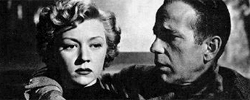
In A Lonely Place
1950 -
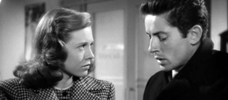
They Live By Night
1948 -
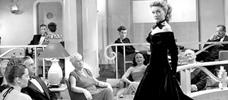
A Woman’s Secret
1949 -
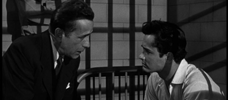
Knock on Any Door
1949 -

Born to Be Bad
1950 -
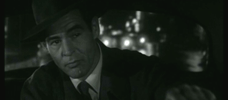
On Dangerous Ground
1952 -
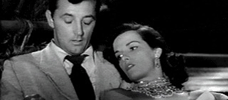
Macao
1952 -
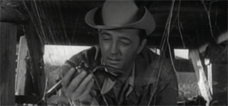
The Lusty Men
1952 -

Johnny Guitar
1954 -

High Green Wall
1954 -
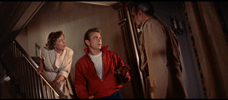
Rebel Without a Cause
1955 -

Bigger Than Life
1956 -

Hot Blood
1956 -

The True Story of Jesse James
1957 -
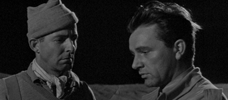
Bitter Victory
1957 -

Party Girl
1958 -

King of Kings
1961 -

55 Days at Peking
1963 -

The Janitor
1974 -

We Can’t Go Home Again
1973-1976 -
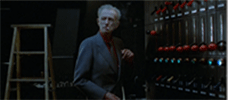
Lightning Over Water
1980
We don’t do comments anymore, but you may contact us here or find us on Twitter or Facebook.



